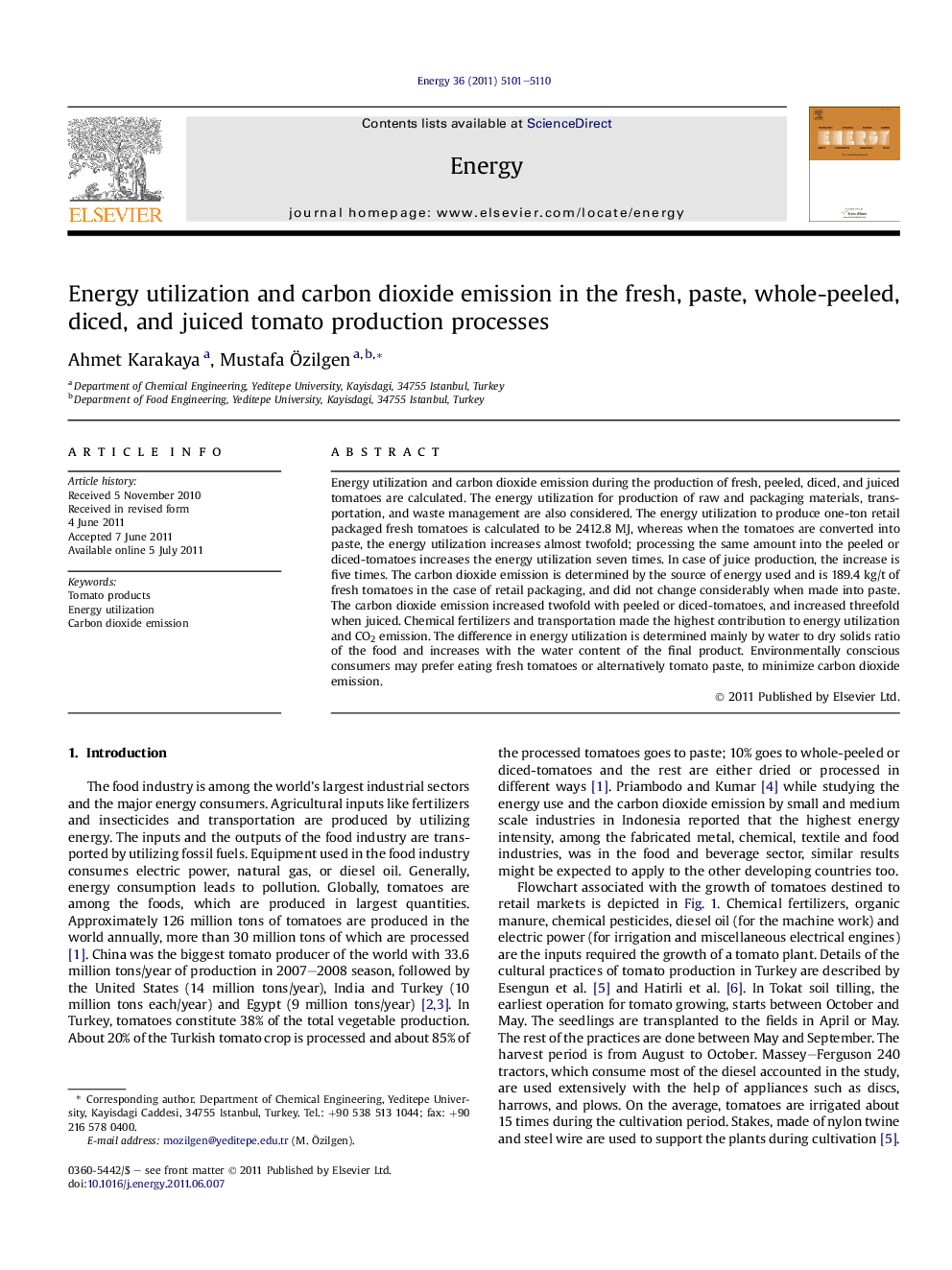| کد مقاله | کد نشریه | سال انتشار | مقاله انگلیسی | نسخه تمام متن |
|---|---|---|---|---|
| 1734273 | 1016154 | 2011 | 10 صفحه PDF | دانلود رایگان |

Energy utilization and carbon dioxide emission during the production of fresh, peeled, diced, and juiced tomatoes are calculated. The energy utilization for production of raw and packaging materials, transportation, and waste management are also considered. The energy utilization to produce one-ton retail packaged fresh tomatoes is calculated to be 2412.8 MJ, whereas when the tomatoes are converted into paste, the energy utilization increases almost twofold; processing the same amount into the peeled or diced-tomatoes increases the energy utilization seven times. In case of juice production, the increase is five times. The carbon dioxide emission is determined by the source of energy used and is 189.4 kg/t of fresh tomatoes in the case of retail packaging, and did not change considerably when made into paste. The carbon dioxide emission increased twofold with peeled or diced-tomatoes, and increased threefold when juiced. Chemical fertilizers and transportation made the highest contribution to energy utilization and CO2 emission. The difference in energy utilization is determined mainly by water to dry solids ratio of the food and increases with the water content of the final product. Environmentally conscious consumers may prefer eating fresh tomatoes or alternatively tomato paste, to minimize carbon dioxide emission.
► Energy utilization for producing one-ton retail packaged fresh tomatoes was 2412.8 MJ
► Energy utilization was 2 folds with paste, 7 times with peeled or diced-tomatoes, 5 times with juice.
► Energy utilization increases with water content of the final product.
► Transportation, packaging, evaporation and chemicals are the major energy consumers.
► Carbon dioxide emission is determined by the source of energy.
Journal: Energy - Volume 36, Issue 8, August 2011, Pages 5101–5110